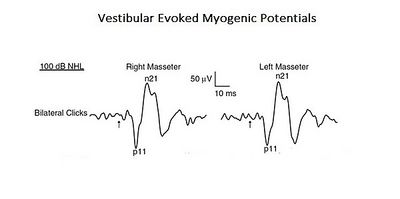Difference between revisions of "'Complex Systems'"
(Created page with "{{main menu}} left|400px After the previous chapters, we should now be able to recognize that, both in modern physics and in biology, a "Complex System" is a multi-component dynamic system composed of different subsystems that typically interact with each other. Such systems are typically studied through "holistic" investigation methodologies or as "total" computation of the behaviours of the individual subsystems, together with their mutual interacti...") |
|||
| Line 16: | Line 16: | ||
#measuring connectivity. | #measuring connectivity. | ||
We have now to consider the complex profile of the masticatory function, to be able to talk about "connectivity" | We have now to consider the complex profile of the masticatory function, to be able to talk about "connectivity"<ref>{{cita libro | autore = Turnbull L | autore2 = Hütt MT | autore3 = Ioannides AA | autore4 = Kininmonth S | autore5 = Poeppl R | autore6 = Tockner K | autore7 = Bracken LJ | autore8 = Keesstra S | autore9 = Liu L | autore10 = Masselink R | autore11 = Parsons AJ | titolo = Connectivity and complex systems: learning from a multi-disciplinary perspective | url = https://www.ncbi.nlm.nih.gov/pubmed/30839779 | opera = Appl Netw Sci | anno = 2018 | PMID = 30839779 | PMCID = PMC6214298 | DOI = 10.1007/s41109-018-0067-2 | oaf = yes}}</ref> | ||
==Mastication and Cognitive Processes== | ==Mastication and Cognitive Processes== | ||
Revision as of 08:59, 21 April 2024
'Complex Systems'
After the previous chapters, we should now be able to recognize that, both in modern physics and in biology, a "Complex System" is a multi-component dynamic system composed of different subsystems that typically interact with each other. Such systems are typically studied through "holistic" investigation methodologies or as "total" computation of the behaviours of the individual subsystems, together with their mutual interactions; these can be described analytically through mathematical models, rather than, in a "reductionist" manner (i.e. by breaking down and analysing the system in its components). Typical of Complex Systems, are the concepts of self-organization and "Emerging Behaviour".
In this chapter we will expose some contents in favour of this more stochastic and complex vision of the neuromotor functions of the masticatory system.
Preliminary Consideration
In recent years, parallel developments in different disciplines have focused on what has been called "Connectivity", a concept used to understand and describe the "Complex Systems". The conceptualizations and functionalisations of connectivity have evolved widely within their disciplinary boundaries, but there are clear similarities in this concept and in its application across the disciplines. However, any implementation of the concept of connectivity involves both ontological and epistemological constraints, which lead us to wonder if there is a type or set of connectivity approaches that could be applied to all disciplines. In this review, we explore four ontological and epistemological challenges in using connectivity to understand complex systems from the point of view of very different disciplines.
In the Chapter 'Connectivity and Complex Systems', we will finally introduce the concept of:
- defining the fundamental unit for the study of connectivity;
- splitting the structural connectivity from functional connectivity;
- understanding of emerging behaviour; and
- measuring connectivity.
We have now to consider the complex profile of the masticatory function, to be able to talk about "connectivity"[1]
Mastication and Cognitive Processes
In recent years, mastication has been a topic of discussion about the maintenance and support effects of cognitive performance.
An elegant study performed through fMR and positron emission tomography (PET) has shown that mastication leads to an increase in cortical blood flow and activates the additional somatosensory cortex, motor motor and insular, as well as the striatum, the thalamus, and the cerebellum. Mastication right before performing a cognitive task increases oxygen levels in the blood (BOLD of the fMRI signal) in the prefrontal cortex and the hippocampus, important structures involved in learning and memory, thereby improving the performance task.
Brainstem and Mastication
The brainstem district is a relay area that connects the upper centres of the brain, the cerebellum, and the spinal cord, and provides the main sensory and motor innervation of the face, head, and neck through the cranial nerves.
This plays a determining role in regulation of respiration, locomotion, posture, balance, excitement (including intestinal control, bladder, blood pressure, and heart rate). It is responsible for regulating numerous reflexes, including swallowing, coughing, and vomiting. The brainstem is controlled by higher Cerebral Centers from cortical and subcortical regions, including the Basal Ganglia Nuclei and Diencephal, as well as feedback loops from the cerebellum and spinal cord.
Conclusive Considerations
In conclusion, it is clear from the premise, that the Masticatory system should be considered not certainly as a system simply governed by mechanical laws, but as a "Complex System" of indeterministic type, where one can quantify the "Emerging Behavior" only after stimulating it and then analysing the response evoked.
- ↑ Turnbull L, Hütt MT, Ioannides AA, Kininmonth S, Poeppl R, Tockner K, Bracken LJ, Keesstra S, Liu L, Masselink R, Parsons AJ, «Connectivity and complex systems: learning from a multi-disciplinary perspective», in Appl Netw Sci, 2018».
PMID:30839779 - PMCID:PMC6214298
DOI:10.1007/s41109-018-0067-2
This is an Open Access resource!
